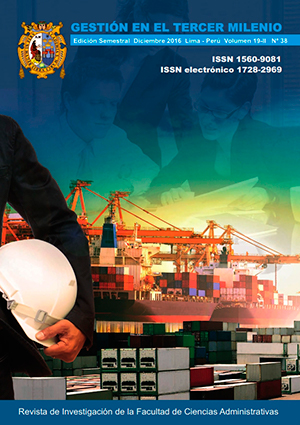The Vulnerability Of Human Capital In The Viality In Lima Metropolitana And Callao
DOI:
https://doi.org/10.15381/gtm.v19i38.13785Keywords:
Walk, transit, accident, vulnerability, pedestrianAbstract
In the Metropolitan City of Lima and Callao, 25% (4.2 Million) of the 16 million daily trips are made through the walk mode, of this total, 49.2% have been private, 35.3% to the school and 11.9% to work; Of the total private by the way walker 52% has been to make purchases and to a lesser percentage the activities of entertainment and to go out to eat (restaurants). The ones that make use are young people (students), housewives and population of smaller economic resource. Concentrate on the places where the majority of people live in poverty, that is to say, in the outskirts of the metropolis, districts of Comas, Ate Vitarte, San Juàn de Lurigancho and others. In spite of its great importance in this way, it has become the most dangerous; Of every 100 people killed by traffic accidents 78 were pedestrians. There are other factors that condition pedestrian action such as: Insufficient pedestrian traffic; Conflict of vehicular flows with pedestrian flows in the moment of rotation to the right and left among others. N moments of amber light among others.Downloads
Published
Issue
Section
License
Copyright (c) 2017 Edgar Vicente Armas

This work is licensed under a Creative Commons Attribution-NonCommercial-ShareAlike 4.0 International License.
THE AUTHORS RETAIN THEIR RIGHTS:
(a) The authors retain their trademark and patent rights, and also over any process or procedure described in the article.
(b) The authors retain the right to share, copy, distribute, execute and publicly communicate the article published in Gestión en el Tercer Milenio journal (for example, place it in an institutional repository or publish it in a book), with acknowledgment of its initial publication in the Gestión en el Tercer Milenio.
(c) Authors retain the right to make a subsequent publication of their work, to use the article or any part of it (for example: a compilation of their work, lecture notes, thesis, or for a book), provided that they indicate the source. of publication (authors of the work, magazine, volume, number and date).






